


Igor Eškinja
伊戈尔·埃斯基尼亚(Igor Eskinja)将谦虚与优雅合二为一,构筑了他的感知建筑学。艺术家“表演”了对象和情况,并从二维形式到三维形式的亲密无声的过渡中捕捉了它们。 Eskinja使用简单廉价的材料(例如胶带或电缆)并在严格的空间参数内以极高的精度和数学精确性对其进行整理,从而定义了超越物理方面的另一种品质,并进入了富有想象力和不可感知的范围。形式的简单性是一种美学特质,它为操纵含义开辟了可能性。正如艺术家所说,它源于一种形式的需要,即在其内部包含各种含义和阅读水平。多重性与虚无之间的张力是Eskinja壁画“绘画”和看似平坦的装置中最重要的方面之一。空虚仍然是感知的活跃空间。它不会隐藏;它评论了可见性,邀请观看者参与在开放空间中虚构空间的构建。艺术家空间结构的暂时性和地毯的短暂品质(其中的装饰物是用灰尘或灰烬精心编织的)表现出对制度性机构和社会政治秩序的主流叙述的抵制。
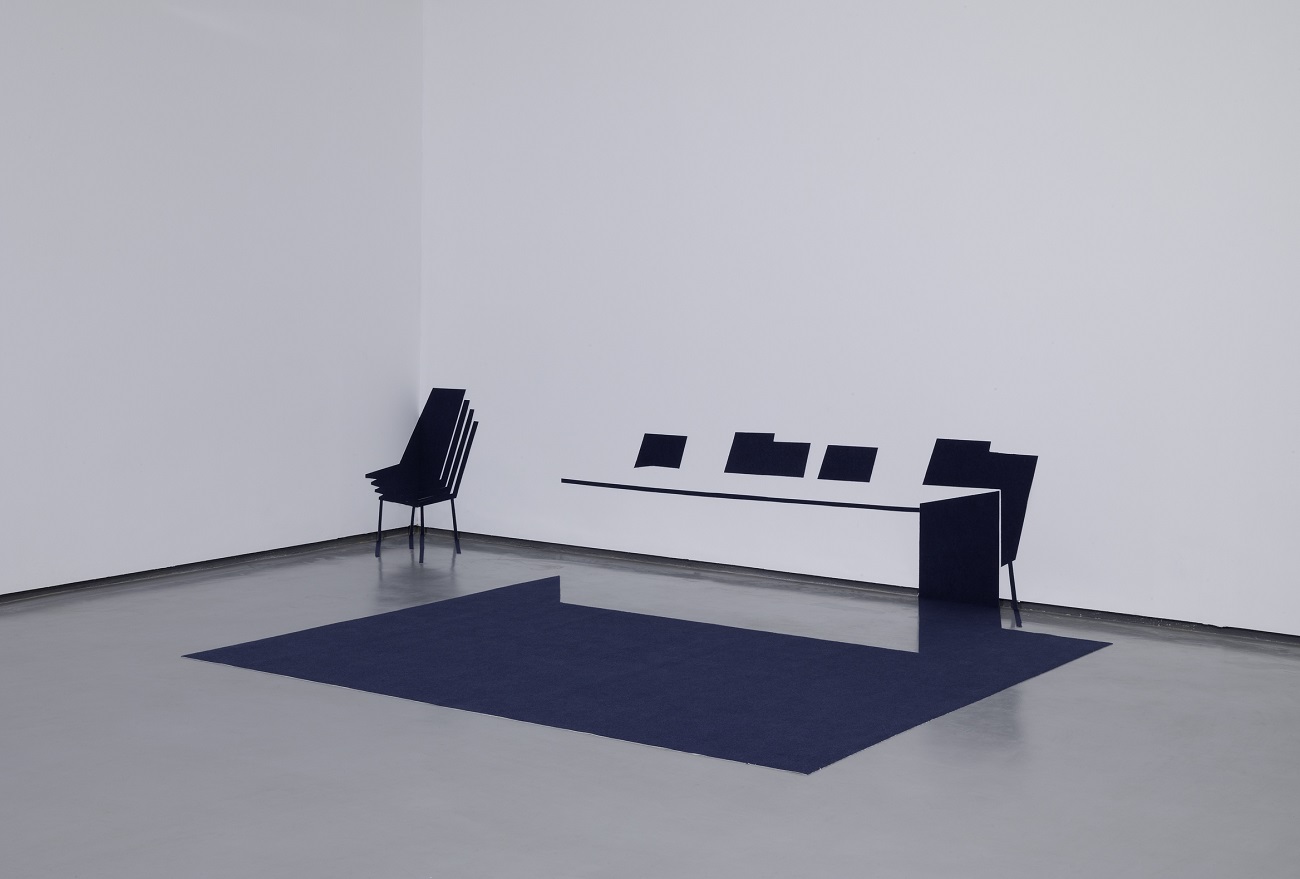






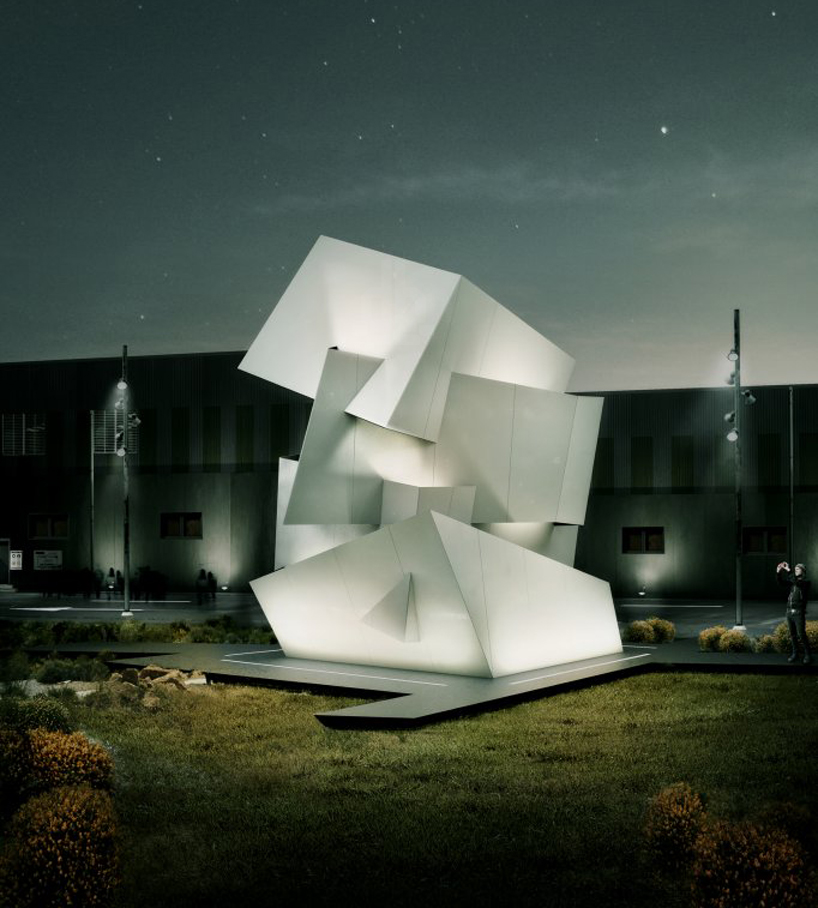
daniel libeskind
دانيال ليبسكيند
丹尼尔·里伯斯金
דניאל ליבסקינד
ダニエル·リベスキンド
ДАНИЭЛЬ ЛИБЕСКИНД
places beyond the wall
Studio Libeskind参与设计和实现全球范围内的各种城市,文化和商业项目。 我们的工作室是建筑师和设计师的合作,他们认为建筑是一种乐观的作法。 我们对待项目的态度是要取得辉煌的成就,您必须相信未来,但也要记住过去。 利伯斯金工作室的建筑源于建筑应富有表现力并能反映当代生活的想法。 创新是我们设计过程的核心。 我们认为必须通过可持续技术来实现大胆的设计,并且我们坚信建筑的艺术在于在预算和功能的限制内创造最大的影响力。 我们从经验中知道,优秀的体系结构来自与优秀客户的合作。 然而,建筑是一门公共艺术,我们不仅对客户负责,而且对我们建设的社区和城市负责。

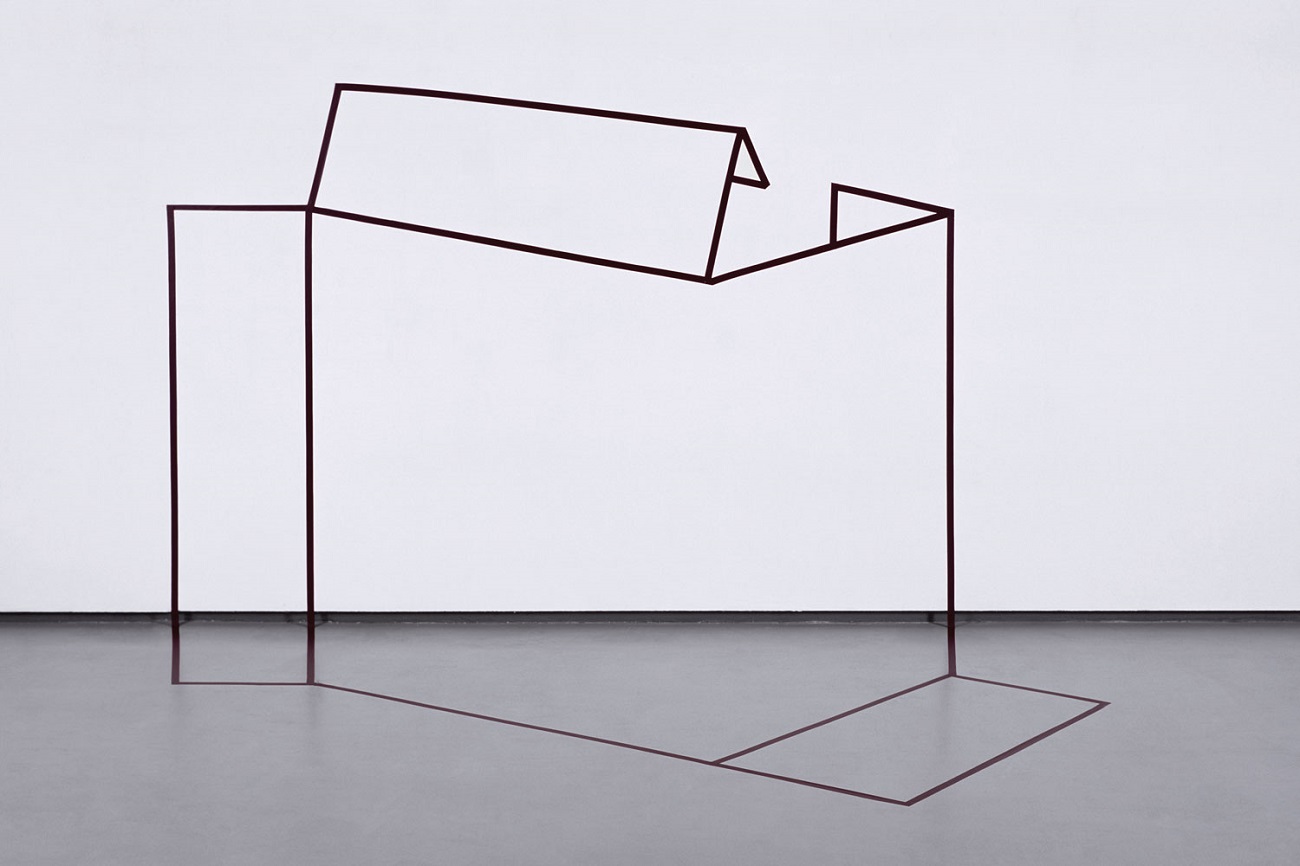

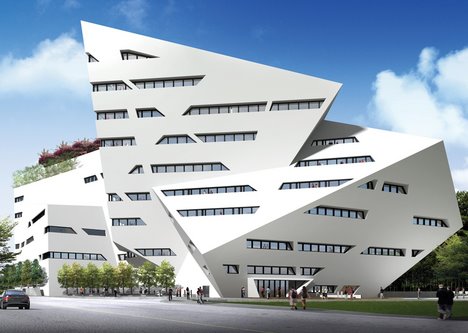


DANIEL LIBESKIND
دانيال ليبسكيند
丹尼尔·里伯斯金
דניאל ליבסקינד
ダニエル·リベスキンド
Даниэль Либескинд
eL Masterpiece






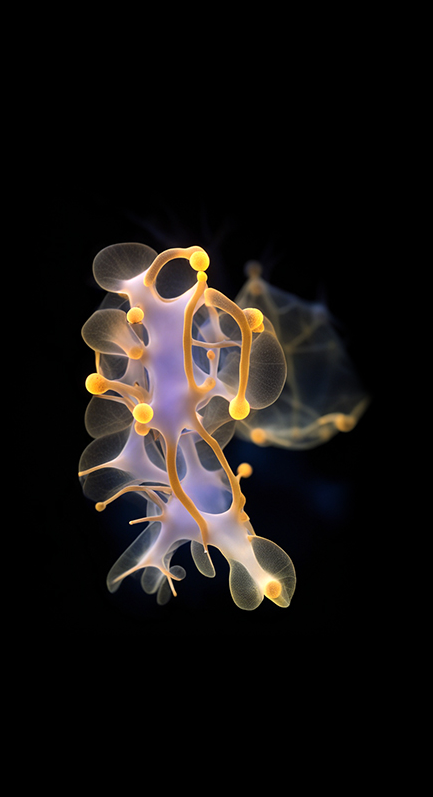
Memo Akten and Katie Peyton Hofstadter
Embodied Simulation
‘Embodied Simulation’ is a multiscreen video and sound installation that aims to provoke and nurture strong connections to the global ecosystems of which we are a part. The work combines artificial intelligence with dance and research from neuroscience to create an immersive, embodied experience, extending the viewer’s bodily perception beyond the skin, and into the environment.
The cognitive phenomenon of embodied simulation (an evolved and refined version of ‘mirror neurons’ theory) refers to the way we feel and embody the movement of others, as if they are happening in our own bodies. The brain of an observer unconsciously mirrors the movements of others, all the way through to the planning and simulating execution of the movements in their own body. This can even be seen in situations such as embodying and ‘feeling’ the movement of fabric blowing in the wind. As Vittorio Gallese writes, “By means of a shared neural state realized in two different bodies that nevertheless obey to the same functional rules, the ‘objectual other’ becomes ‘another self’.”

DAAN BRINKMANN
Instrument de peau
File Festival
Skinstrument est un instrument de musique qui peut être joué par deux joueurs. Au moyen d’un petit courant imperceptible, les joueurs font partie d’un circuit. Lorsque les joueurs se touchent sur la peau, ce circuit commence à générer du son. L’intensité du toucher détermine la fréquence du son.

ERIC SIU
萧子文
エリック·シウ
Touchy
file festival
Touchy is a human camera – a wearable device that literally transforms a human being into a functioning camera. The individual who is wearing the device is constantly “blinded” unless someone touches his/her skin. The touch causes the shutters in front of the eyepieces to open and restores the wearer’s vision. When physical contact is maintained for 10 seconds, the camera takes a “Touch-Snap” (i.e., a photo that is taken by Touchy), which is displayed on the device’s LCD.

DORETTE STURM
FILE SAO PAULO 2017
THE BREATHING CLOUD
“The Breathing Cloud” is a monumental floating organism. The work transforms a space by its motion, light, and rhythmic breathing. With this light art the phrase “let a room come to life” gets a new meaning. The clouds skin looks fragile and soft, and the movements are rhythmic, yet random, so the whole room feels like a living being. The technology is designed so that the strong LED modules and the mechanism support the pervasive breathing. It gets physically bigger and smaller and embraces with its bright light space.

VÉRONIQUE BÉLAND
As We Are Blind
As We Are Blind calcule et interprète en temps réel ces données physiologiques sous la forme d’une production musicale et photographique unique. Le spectateur pose la main sur un capteur mesurant son activité électrodermale, une action permettant de dresser sa cartographie émotionnelle. Les valeurs recueillies, qui représentent des variations propres à chaque individu, sont d’abord converties sous la forme d’une image révélant son champ électromagnétique. Puis, ces données physiologiques sont analysées par un programme informatique capable, en suivant des règles de composition préétablies, de les transcoder en partition musicale.

Heavy Duty Love
Lucy Mcrae
HEAVY DUTY LOVE
A cautionary narrative in an uncomfortable, complex debate on the scientific acceleration directing our evolutionary path —from gene-edited babies to CRISPR to AI — Heavy Duty Love is a mental health prop existent as a tactile mechanical structure, asking, “As we head toward a life designed from scratch, will we seek new types of intimacy?”. Realised as a speculative domestic device compensating for a lack of human touch in early life, Heavy Duty Love sandwiches the body between layers of soft, dampening materials normally used in contemporary camping or construction.

Juri Hwang
Somatic Echo
“Somatic Echo” is an experimental sound art and research project that utilizes bone conducted sound as a method to investigate human audition and create an unusual and mesmerizing aesthetic of the body as a medium of sound. The installation uses a reclining chair and a sound mask to play an 8-channel sound composition through 8 transducers placed on the user’s head: 6 channels in the face and 2 in the back of the head. The transducers transmit sound through the bone structure of the skull directly to the listener’s inner ear, bypassing the outer ears, which normally are the gateway for auditory signals. The listeners experience the soundscape through both their auditory and tactile senses perceiving a sonic image shaped by the sound traveling through the head structure and through vibrations applied to the skin. This set up lets us experience sound through our body and our body through sound.

Camille Legrand & Bart Hess
Epistēmē
Titled with the Ancient Greek word for knowledge and understanding, the installation is born of the belief that we absorb knowledge through the senses, with the skin acting as an interface between the body and the world around us. ‘To illustrate the skin in states of transformation, I imagined it as a canvas for sensations felt and information absorbed. The digital manipulation in each film melds body and sensation, skin and material, reality and virtuality to express the effects of each product,’

bohyun yoon
БОХЬЮН ЮН
윤보현
To Reverse Yourself
My work poses the question: how does reality becomes exquisitely animated by certain social control systems such as politics, mass media, technology, science, and etc. It is my artistic goal to reveal how human beings are fragile and delicate in these social environments. By living in Korea, Japan and the U.S, I have first-hand experience in diverse social systems and have come to view my life experiences as raw material for my research. With my research in mind, my art utilizes the body as the tool for an intensive investigation of the public and private; examining the relationship between how people understand their body and how this understanding represents themselves in the greater context.
Currently, I am curious about human perception developing parallel with the ever-evolving progression of technological world. Thus, I question technology’s relationship to reality and illusion; asking what is reality? My work takes advantage of illusion to explore and answer this question, and often my artistic materials consist of the body and mirrors. I use mirrors for integrating reality and illusion.

Lu Yang
Delusional Crime and Punishment
Who created life? I think this is the question everyone has been asking themselves since childhood? At least I have many doubts, the subjective feeling of the existence of consciousness allows us to face the world from that source. Why do humans eat like this for energy? Why not get energy in other ways? Why do you need energy to exercise? Why is this so joyful and so painful? What is the need for pain, pleasure, fear, excitement, etc.?Upon careful analysis, it appears that the source of many desires comes from the design of our physical structure. If God designed human beings, why was he designed that way and why was he designed as a biological mechanism for sin and hell? Why do human beings have desires because of such a physical structure and even they don’t understand self-control, they have sins, and they have to go to another hell of punishment system to atone for their sins? Who created this series of systems?

aes+f
allegoria sacra
This piece by AES+F takes the Italian Renaissance art piece Allegoria Sacra in order to show a modern representation of perjury. There are political and religious tones but there is not an overt statement trying to be made. AES+F are asking their audience to take a deeper look at how we see the Western and Eastern worlds, and how all people are judged.

danny karas
sofi
in analysis of the modern skyscraper there is traditionally an aesthetic agenda that localizes itself in a “shoes” or “hat” location. The tower typology has ignored the possibility of a center distortion. This distortion acts as an aesthetic element as well as an organizational(programmatic) locator. By designing from the middle out there is a chance for the building to better blend with its context by keeping the processional elements in the center. Entrance and roof conditions mimic their tower brothers and give a moments rest in the exuberance of design. This proposal creates a center distortion and layers form through a simulation of gravity and the“claspyness” of the outer skin. The inner void acts as a way of creating a Secretary oriented office program rather than a traditional first floor security, freeing up the center of the building to the public. The project looks to rationalize itself through components rather than a monolithic form.

Hiroshi Ishiguro
Mindar
Революция машин уже пришла в религию – по крайней мере, в Японии. Буддийский храм в городе Киото решил изменить свои практики, чтобы стать ближе к людям, и установил там робота. Твоя роль? Объявляйте проповеди верующим. Робот Миндар ростом почти шесть футов имеет женский голос и был создан в честь буддийского божества милосердия Каннон. Руки, лицо и плечи корпуса робота покрыты силиконом (имитирующим человеческую кожу). Это все. Все остальное состоит из открытых металлических шестерен.
.
Mindar
A revolução da máquina já entrou na religião – pelo menos no Japão. Um templo budista na cidade de Kyoto decidiu mudar suas práticas para se aproximar das pessoas e instalou ali um robô. Qual é o seu papel? Anuncie sermões aos crentes. Com quase um metro e oitenta de altura, o robô Mindar tem uma voz feminina e foi criado em homenagem à divindade budista da misericórdia Kannon. Os braços, rosto e ombros do corpo do robô são cobertos com silicone (imitando a pele humana). É tudo. Todo o resto consiste em engrenagens de metal expostas.
.
Mindar
The machine revolution has already entered religion – at least in Japan. A Buddhist temple in the city of Kyoto decided to change its practices in order to become closer to people, and installed a robot there. What is your role? Announce sermons to believers. Almost six feet tall, the robot Mindar has a female voice and was created in honor of the Buddhist deity of mercy Kannon. The arms, face and shoulders of the robot body are covered with silicone (imitating human skin). It’s all. Everything else consists of exposed metal gears.
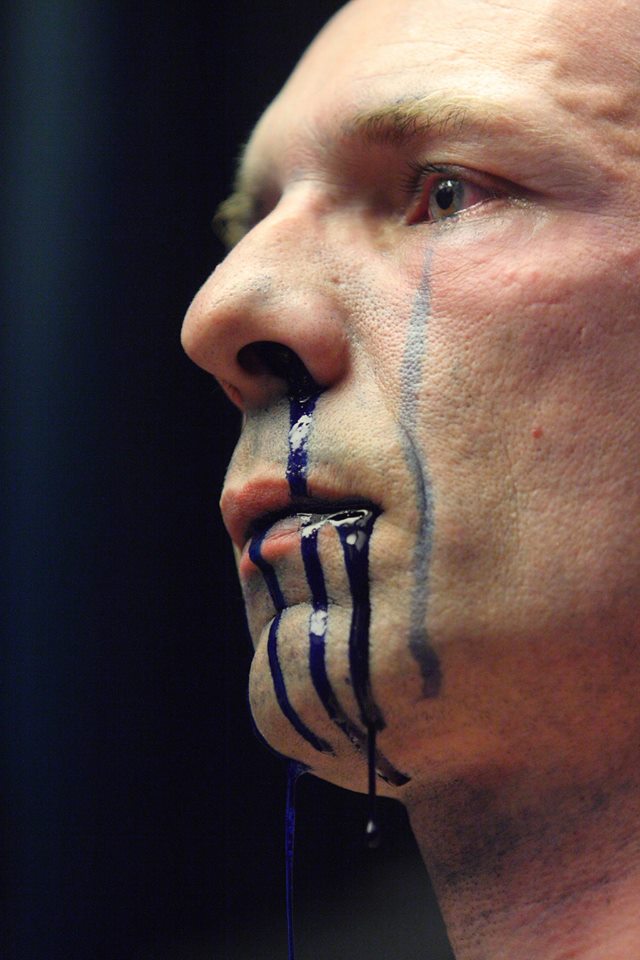
Yann Marussich
Bleu Remix
In his spectacle-installation Bleu Remix, Yann Marussich returns to a theme originally explored in Bleu Provisoire (2001), a spectacle in which a mysterious blue liquid oozes through the layers of his skin as though it were the final effect or by-product of his body’s inner processes. In Bleu Remix, the artist once more invites the viewer to experience an intimate journey through the corners of his body. Each time the spectacle is performed, a different (local) musician accompanies Marussich. This unique, singular confrontation establishes a new relationship between the sound and image. The meeting of the two artists brings an element of risk and uniqueness to the event, as if the music explores the spectacle repeatedly, resulting in new ways of perception.

Friendred
Skin-awareness
The immersive space morphs and alters with light and becomes solid, its pressure composing and decomposing the self-awareness of skin. The dancer’s body is extended and manipulated as a conscious entity, exceeding the physiological object. The constant feedback between the body’s trajectory and interaction with the environment changes the nature of the object itself.

Alisa Andrasek
This research used stigmergy behaviour, another example of agency-based systems, which could be programmed to be highly adaptive to local data. What is most intriguing and attractive in this case, is contrasting organic aesthetics emerging from algorithms like stigmergy, with its plant like formations, and the hyper-rationalisation and genericity of voxelised geometry. Different resolutions were introduced in the facade panels, by using an octree algorithm. The result is a building skin that from afar looks like a plant, but in close up has almost Minecraft-like aesthetics coming from a multi-resolution voxel field. Organic stigmergy (stígma + ergon) partly plays a role in the distribution of data through the facade field, rather than generating geometry. It leaves its imprint in the density of geometry
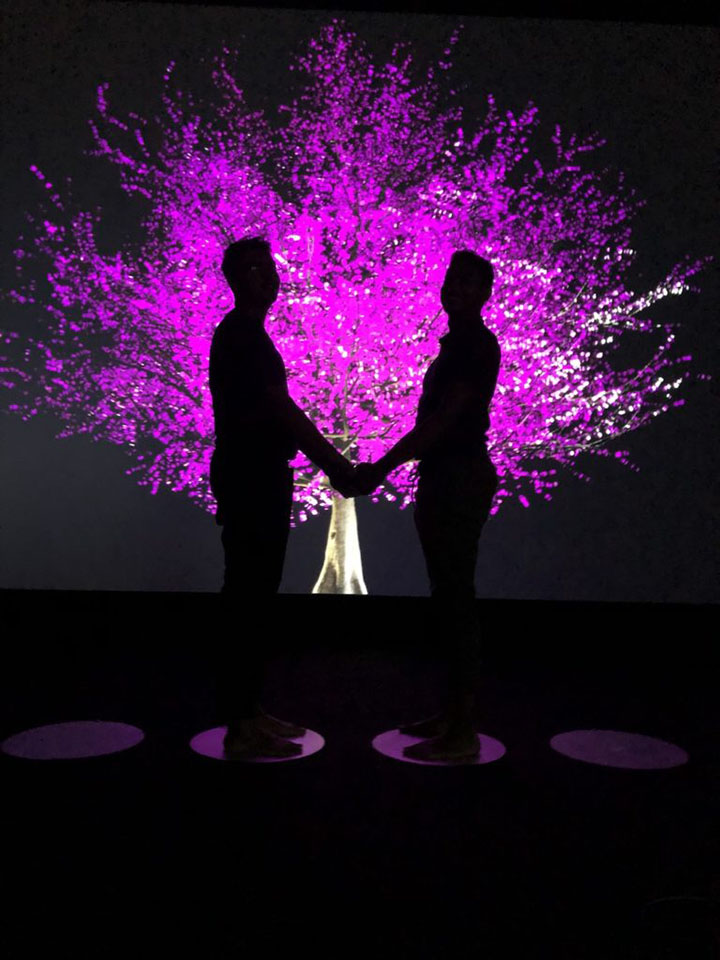
Lisa Park
Blooming
“Blooming” is an interactive audiovisual installation that highlights the importance of human connection. It takes the form of a life-size 3D Cherry blossom tree, which is a common symbol of social ties and transience of life in East Asian culture. As a response to participants’ skin-to-skin contacts, heart rate, and gestures, “Blooming” blossoms according to their intimacy. As audience members hold hands or embrace, the digital Cherry tree flowers bloom and scatter. When they let go off their physical contacts, the flower return to its pre-bloom state. The color of the flowers turns white or red based on participants’ heart rate as they interact with each other. (the faster the heart rate, the redder the tonality; the slower the heart rate, the whiter the tonality). In addition to the visual responses, sounds are also modulated according to the tree’s different stages: pre-bloom, blooming, petals falling.

Juuke Schoorl
Liquid Skin
‘Liquid Skin’ is a visual research towards the changing boundaries between the physical world of the human body and the digital world. By borrowing techniques found in touch screen technologies, but instead of following the cold underlying logic of present day devices, it proposes a situation where this border becomes liquid and sensual with an emphasis on the fluidity of touch and movement. Turning the skin itself into a medium of visual expression without the constraint of the technical grid.

Paul Vanouse
Labor
What does labor smell like? Labor is a dynamic, self-regulating art installation that re-creates the scent of people exerting themselves under stressful conditions. There are, however, no people involved in making the smell – it is created by bacteria propagating in the three glass bioreactors. Each bioreactor incubates a unique species of human skin bacteria responsible for the primary scent of sweating bodies: Staphylococcus epidermidis, Corynebacterium xerosis and Propionibacterium avidum. As these bacteria metabolize simple sugars and fats, they create the distinct smells associated with human exertion, stress and anxiety. Their scents combine in the central chamber with which a sweatshop icon, the white t-shirt, is infused as the scents are disseminated. The scent intensifies throughout the exhibition.
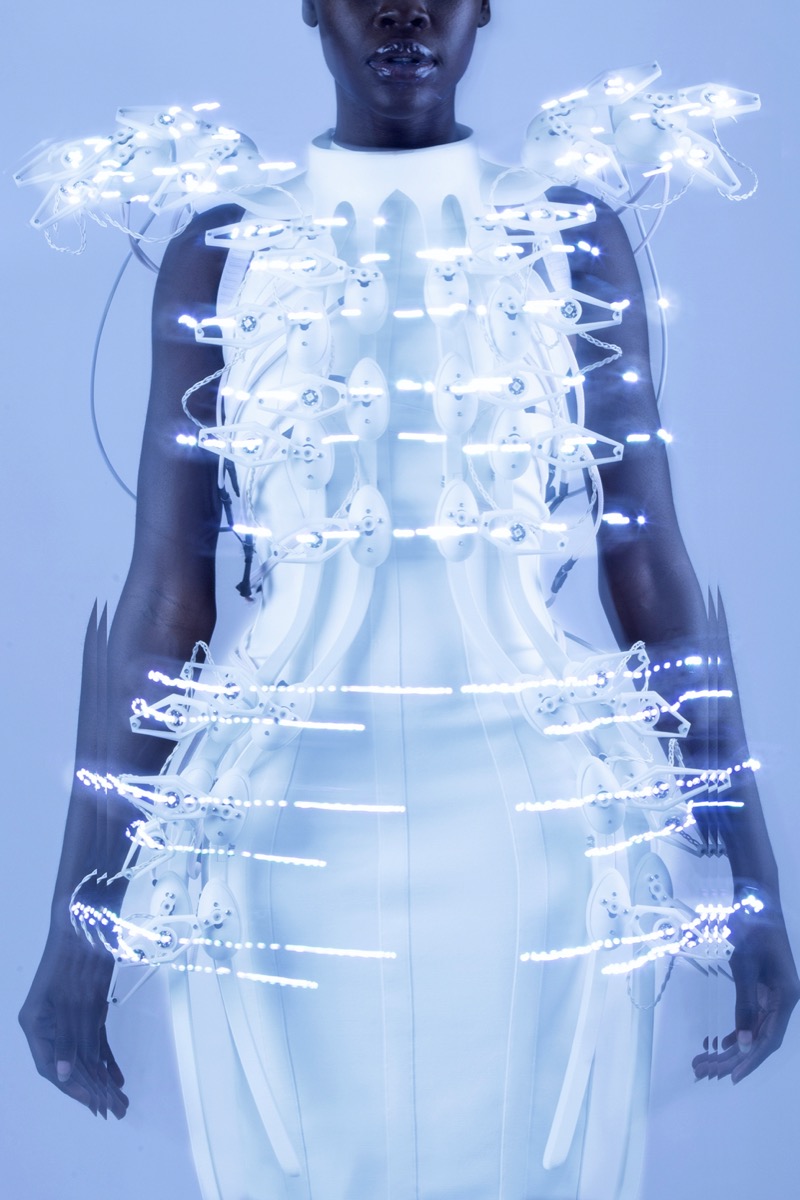
ANOUK WIPPRECHT
PANGOLIN DRESS
The Pangolin Scales Project demonstrates a 1.024 channel BCI (Brain-Computer Interface) that is able to extract information from the human brain with an unprecedented resolution. The extracted information is used to control the Pangolin Scale Dress interactively into 64 outputs.The dress is also inspired by the pangolin, cute, harmless animals sometimes known as scaly anteaters. They have large, protective keratin scales covering their skin (they are the only known mammals with this feature) and live in hollow trees or burrows.As such, Pangolins and considered an endangered species and some have theorized that the recent coronavirus may have emerged from the consumption of pangolin meat.Wipprecht’s main challenge in the project’s development was to not overload the dress with additional weight. She teamed up 3D printing experts Shapeways and Igor Knezevic in order to create an ‘exo-skeleton’ like dress-frame (3mm) that was light enough to be worn but sturdy enough to hold all the mechanics in place

MIKE PELLETIER
МАЙК ПЕЛЛЕТЬЕ
Peristaltic Skin
Questo era un progetto di collaborazione con Lucy McRae creato per il Transnatural Festival nel 2010. La Peristaltic Skin Machine è una sperimentazione sul corpo con liquido, aria, velocità e colore.

Olivier Ratsi – Antivj
Onion Skin
Principalement basé sur l’expérience de la réalité et les représentations de la perception de l’espace, Olivier Ratsi considère la réalité objective, le temps, l’espace et la matière comme des notions d’information intangibles.
Son travail consiste à concevoir des processus de discontinuité avec ces notions afin de pouvoir partager avec le spectateur un autre point de vue.
Par le biais de ce processus, Ratsi crée une cassure dans cette réalité objective, altérant notre perception du réel.
Toutefois cette cassure significative et perturbante est assez modérée afin de ne pas priver le spectateur de sa capacité subjective de reconstruction/reconstitution de la réalité, via son expérience et sa propre culture. Le processus de création basé sur la déconstruction des repères spatio-temporels et les dispositifs utilisant la technique de l’anamorphose, développée au cours de ses recherches, jouent principalement le rôle de déclencheurs d’émotions, qui n’ont pas seulement pour but de montrer ce que peuvent être les choses autrement, mais plutôt de questionner leurs références.
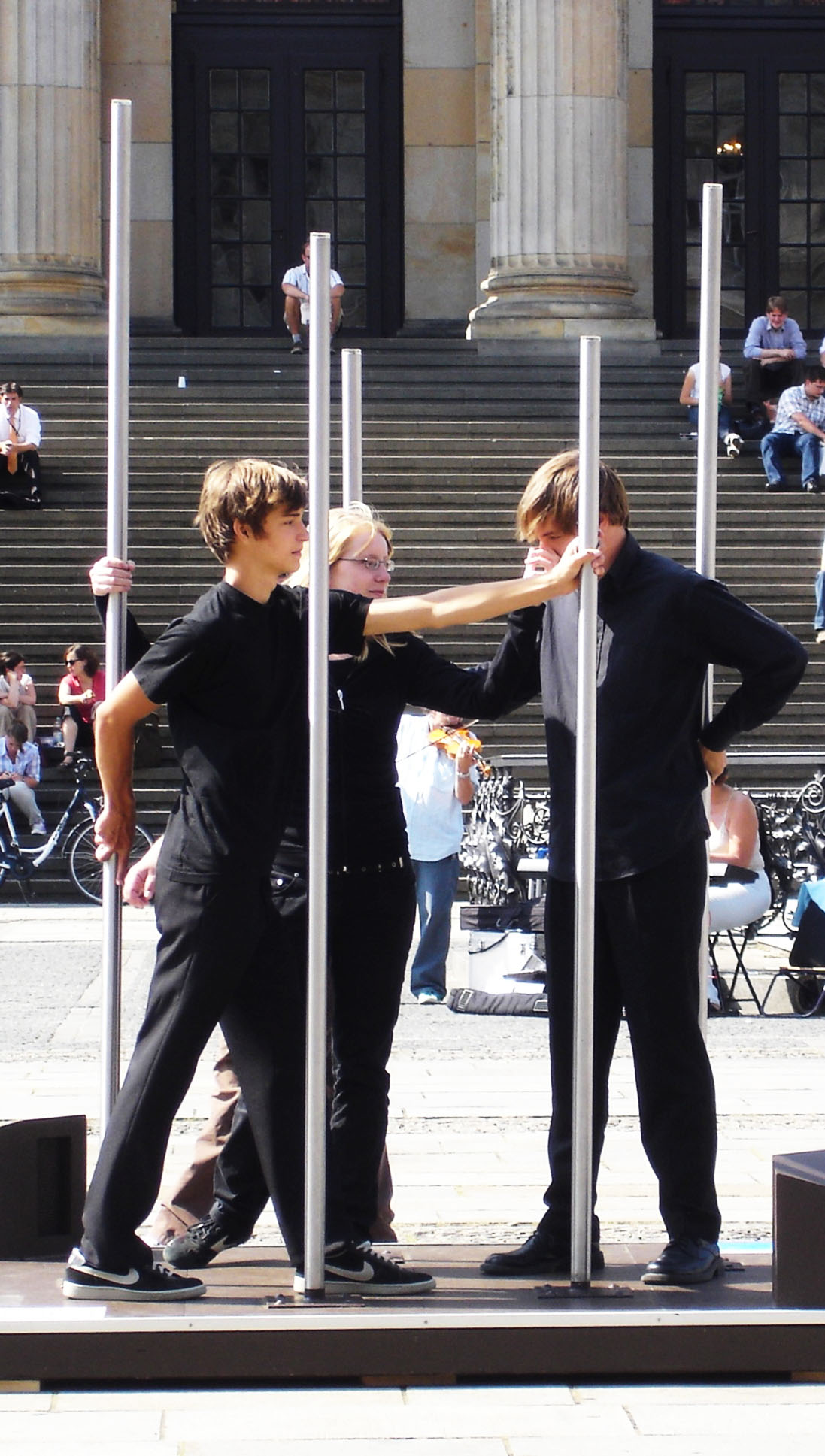
Erwin Stache
Kilo Ohm
Erwin Stache is a German composer and sound artist who designs installations for specific locations. His Kilo Ohm – which you can of course try out yourself – uses the electrical resistance of the player’s skin to generate sound. Each new touch sounds different.

Francesca Fini
Skinned
Francesca Fini è un’artista interdisciplinare focalizzata su cinema sperimentale, animazione digitale, nuovi media, installazione e performance art. “Skinned” un collage dadaista che gioca sul concetto di identità, con selfie impossibili realizzati dai protagonisti di capolavori storici della ritrattistica e dell’autoritratto. Cosa si nasconde sotto la pelle, scorticato dalle radiazioni tossiche dei telefoni cellulari? Cosa avrebbero fatto Leonardo da Vinci e Andy Warhol con questo dispositivo malvagio?

MALIN BÜLOW
Elastic Bonding
Bülow’s performative installations draw attention to the body and in particular the skin. With next to clinical sharpness she seeks to touch upon the relational painspots around our existence. She works together with dancers that become activators and holders of her elastic, sensi-claustrophobic interventions.

kyttenjanae
Soft as Snow
Soft as Snow, auch bekannt als Oda Egjar Starheim und Øystein Monsen, Norwegens beste Anbieter von ungewöhnlichem, kristallinem Pop, sind mit einer brandneuen Veröffentlichung zurück. Die 4-Track-EP “Chrysalis” ist die zweite Originalveröffentlichung des Duos nach ihrem Debüt 2014 – die EP “Glass Body”, die auch als “Glass Body Remixed” veröffentlicht wurde, eine beeindruckende Sammlung überarbeiteter Versionen von Lucy, Gabe Gurnsey von Factory Floor, Maria Minerva und Brian DeGraw von Gang Gang Dance: „Chrysalis ist hart, direkt, frei, emotional. Es bringt uns zum Tanzen, Verbinden, Explodieren. “ – Weich wie Schnee Der Anfangstrack „I Adore“ zeichnet sich durch abrasive Synthesizer und schimmernde Beugungen aus, während sich „Fluid“ von glasiger Zurückhaltung zu einem Synth-Freak-Out entwickelt. “Mouth” ist eine bedrohliche Absichtserklärung, alle Stammes-Percussion und Ur-Yelps, die an die beunruhigende Produktion von Mica Levis Soundtrack für “Under The Skin” erinnert. Die EP geht mit dem energiegeladenen, skitternden “Her Blood Is Gold” zu Ende, wobei Odas seltsame, jenseitige Stimme alles zusammenhält.

Dorian Gaudin
The coffee cup spring
The monotone repetition of the movement created by the conveyor belt recalls the pace and the landscape of animation or video games. As an extension of the conveyor, several geometric and orthogonal motifs evoking a Tetris composition are slotted together and suggest the shapes of a table, a chair or stairs. The objects are exposed on thin metal structures with fringed ends, and seem to peel off from their construction, as if they were undressing and exchanging skins, depriving themselves of sculptural depth and allowing only the surface to emerge. The technique developed by the artist to produce the sculptures inverts the usual steps of printing: first the pattern is created, then the background to which the fiberglass support is apposed. The pieces are therefore ripped off their mold, revealing their final texture, and the motif on every sculpture seems to remain the same, yet is altered by the shape of the object itself. A series of wall works using this procedure extends from the installation into the gallery space.

Schweigman & en Cocky Eek
Spectrum
How intensely can you experience colour? Colour as a phenomenon which you don’t just see, but which totally absorbs… Spectrum is a spatial installation that makes colour tactile and tangible.
Fall backwards into a black hole and reawaken in an infinite spectrum. An immersive experience which will give you a whole new perspective on the coloured cycles of our everyday light. Following Blaas and Curve, Spectrum completes a triptych centred on white space, each piece created with spatial designer Cocky Eek in collabaration with Schweigman&. In Blaas you crawl through an inflatable balloon; in Curve you enter an endlessly spiralling tunnel. Spectrum starts by asking: how can we make the colour physically tangible?

